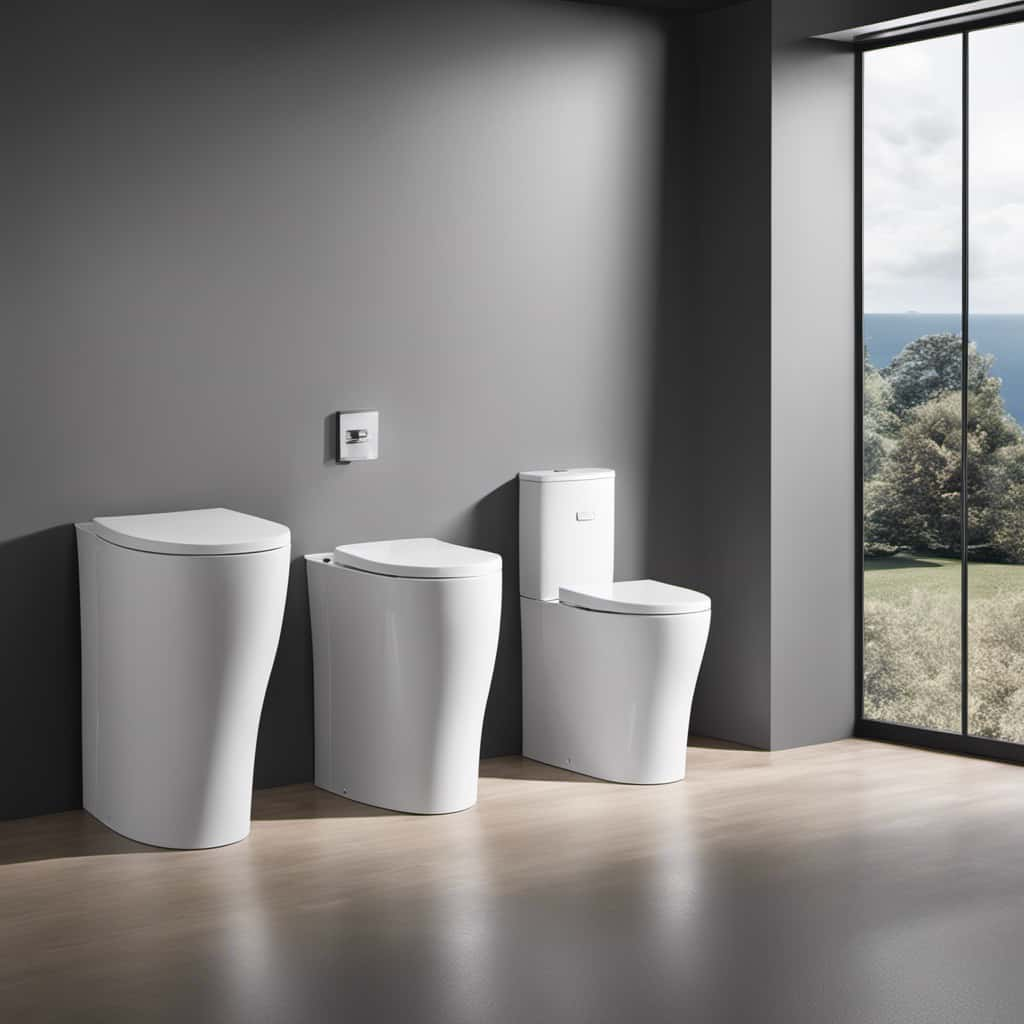Ever curious about the functioning of a bucket toilet? Allow us to explain it to you in detail.
Picture this: you’re in the great outdoors, miles away from any plumbing. Yet, nature calls. That’s where the bucket toilet comes in. It’s a simple but ingenious solution to our basic human needs.
With its basic components, waste collection and storage methods, odor control techniques, and disposal and composting processes, the bucket toilet ensures we can answer nature’s call with ease and hygiene.
Let’s dive in and explore its inner workings.
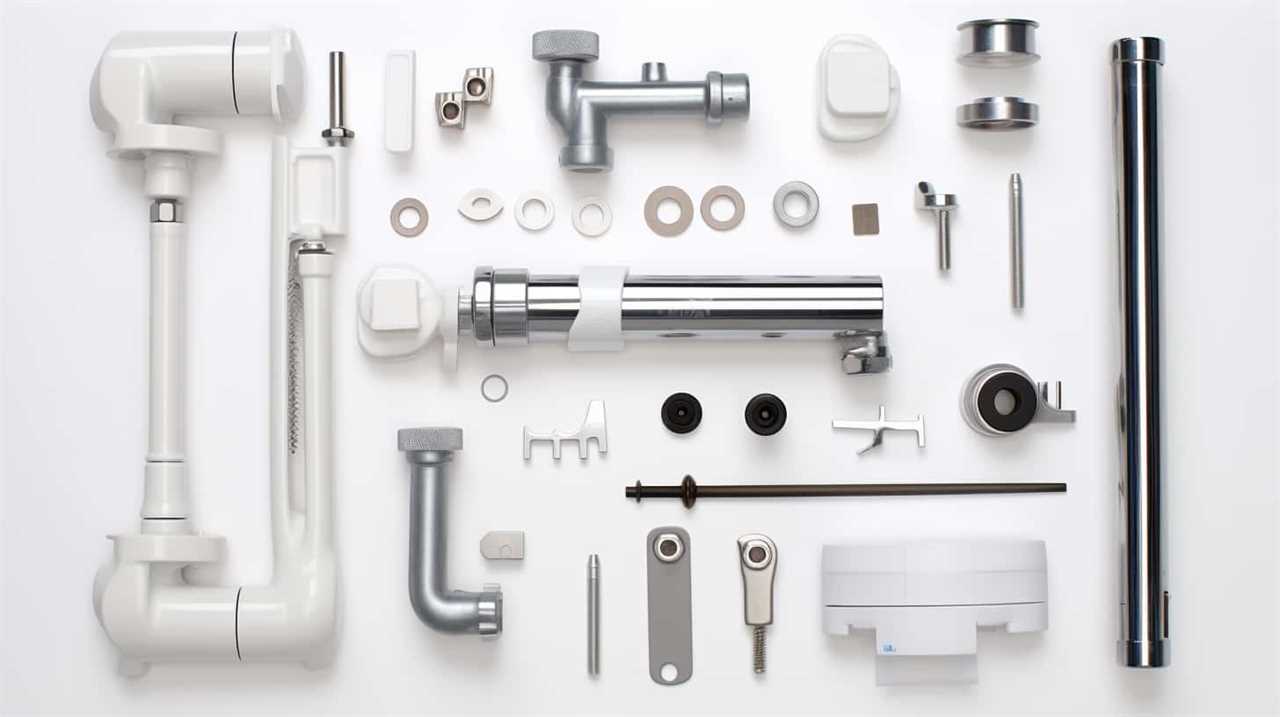
Key Takeaways
- A bucket toilet is a simple, affordable, and portable sanitation solution.
- It consists of a bucket or container, a toilet seat or lid, and a waste management system.
- The waste management system can include options like using sawdust, ash, or lime to cover the waste.
- Some bucket toilets also have a urine-diverting system to separate liquid and solid waste.
Basic Components
When it comes to toilet design and waste management, understanding the basic components of a bucket toilet is essential. The main components include the toilet seat, the bucket or container, and the absorbent material.
The toilet seat is where the user sits and is designed to provide comfort and stability. The bucket or container serves as the receptacle for waste and is typically made of durable and easy-to-clean materials. Lastly, the absorbent material, such as sawdust or peat moss, is used to cover the waste after each use to minimize odors and facilitate decomposition.
These basic components work together to provide a hygienic and efficient waste management solution.
Now, let’s delve into the next section about waste collection and storage.
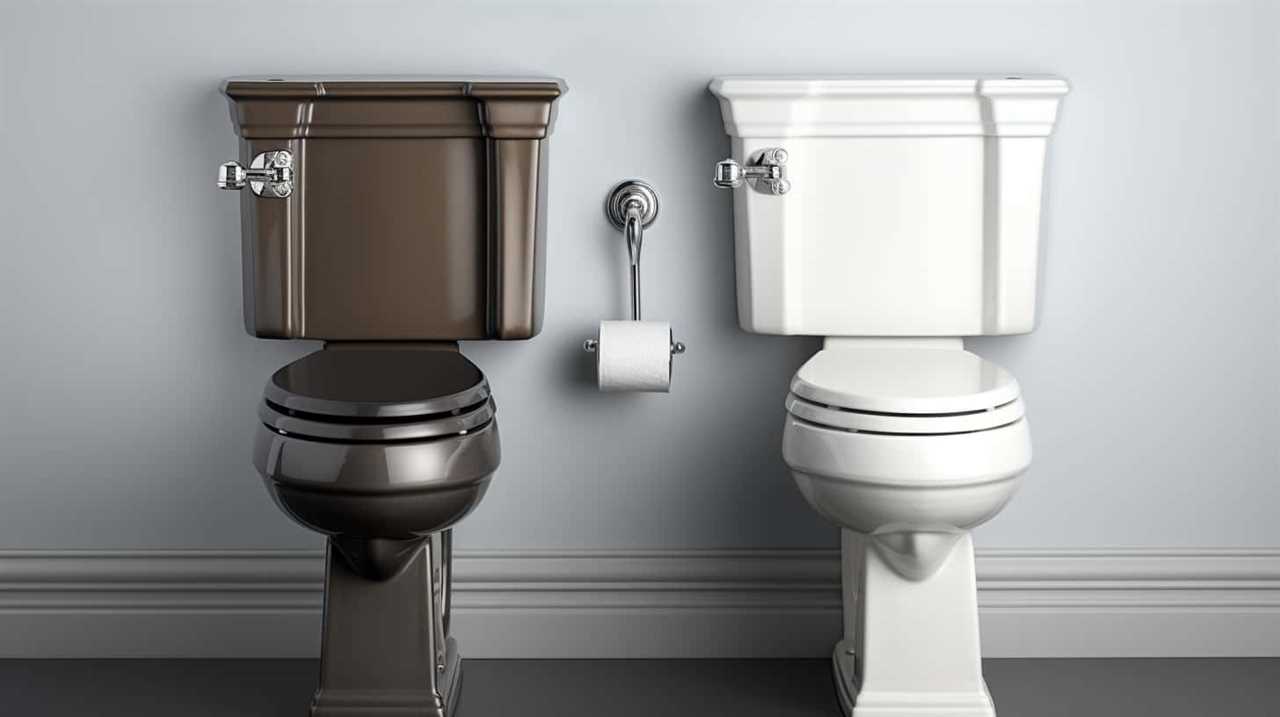
Waste Collection and Storage
After understanding the basic components of a bucket toilet, let’s now explore how waste collection and storage are managed. In a bucket toilet system, waste is collected in a bucket or container placed beneath the seat. This waste is typically human feces and urine. To ensure proper waste treatment and minimize environmental impact, it is important to handle and store waste appropriately. The table below outlines some key considerations for waste collection and storage in a bucket toilet system.
| Waste Collection and Storage Considerations |
|---|
| 1. Regularly empty the bucket to prevent odor and overflow. |
| 2. Store the waste in a designated area away from food and water sources. |
| 3. Use a tightly sealed lid to minimize odor and prevent pests. |
| 4. Consider using additives or absorbents to control odor and moisture. |
| 5. Dispose of the waste responsibly, following local regulations and guidelines. |
Odor Control Methods
To manage odor in a bucket toilet system, we employ various effective methods. Here are three key odor control methods commonly used:
- Carbon filters: These filters are designed to absorb and trap odorous gases, preventing them from being released into the surrounding air. The carbon material has a large surface area that helps to capture and neutralize the odor molecules, resulting in a fresher and more pleasant environment.
- Ventilation systems: Proper ventilation is crucial in minimizing odors. By installing a ventilation system, such as an exhaust fan or a vent pipe, the air inside the toilet area can be continuously circulated and replaced with fresh air from outside. This helps to remove any unpleasant smells and maintain a more comfortable atmosphere.
- Odor-neutralizing agents: Some bucket toilet systems use odor-neutralizing agents, such as baking soda or specialized products, to help mask or eliminate odors. These agents work by chemically reacting with the odor molecules, neutralizing them and reducing their intensity.
Disposal and Composting
To effectively manage and minimize unpleasant smells in a bucket toilet system, we employ various odor control methods, including carbon filters, ventilation systems, and odor-neutralizing agents.
Proper disposal methods are crucial to ensure minimal environmental impact. When it comes to emptying the contents of the bucket toilet, it’s important to choose a designated area or facility that can handle human waste safely and responsibly. Some common disposal methods include burying the waste in a specially designated area, using a composting system, or utilizing a waste management service that specializes in handling human waste. These methods help to ensure that the waste is properly treated and doesn’t pose a risk to the environment or public health.
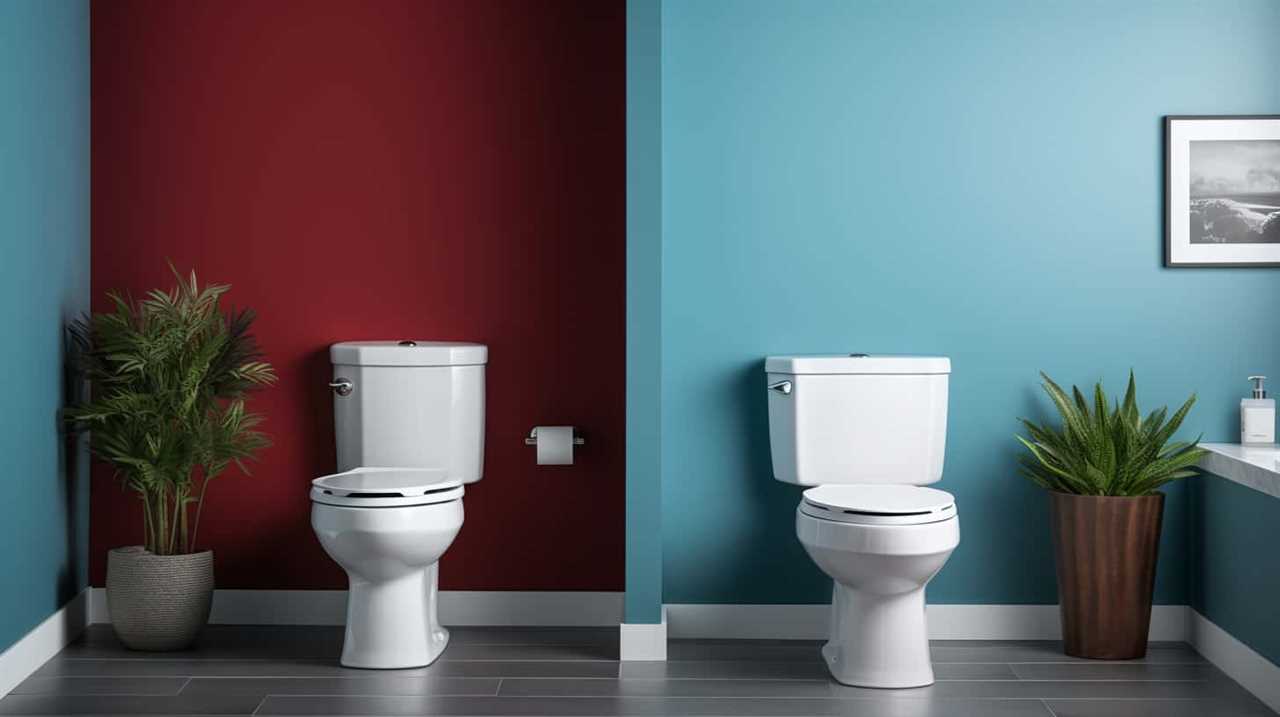
Now that we understand the importance of disposal and composting, let’s move on to the next topic: maintenance and cleaning.
Maintenance and Cleaning
Now let’s talk about how we can effectively maintain and keep a bucket toilet clean. Proper maintenance techniques are essential to ensure the longevity and functionality of a bucket toilet.
Here are three important steps to follow:
- Regular Emptying: It’s crucial to empty the bucket regularly to prevent overflow and unpleasant odors. Plan a schedule based on your usage and ensure proper disposal of waste in a composting system.
- Cleaning the Bucket: After emptying, thoroughly clean the bucket with eco-friendly cleaning solutions. Avoid harsh chemicals that can harm the environment. Use a scrub brush and warm water to remove any residue and sanitize the bucket.
- Deodorizing: To keep your bucket toilet smelling fresh, use natural deodorizers like baking soda or essential oils. Sprinkle a small amount into the bucket after cleaning to neutralize any odors.
Frequently Asked Questions
Can a Bucket Toilet Be Used Indoors?
Yes, a bucket toilet can be used indoors. It is one of the alternatives to traditional flush toilets. The benefits of using a bucket toilet indoors include water conservation and a more sustainable waste management system.
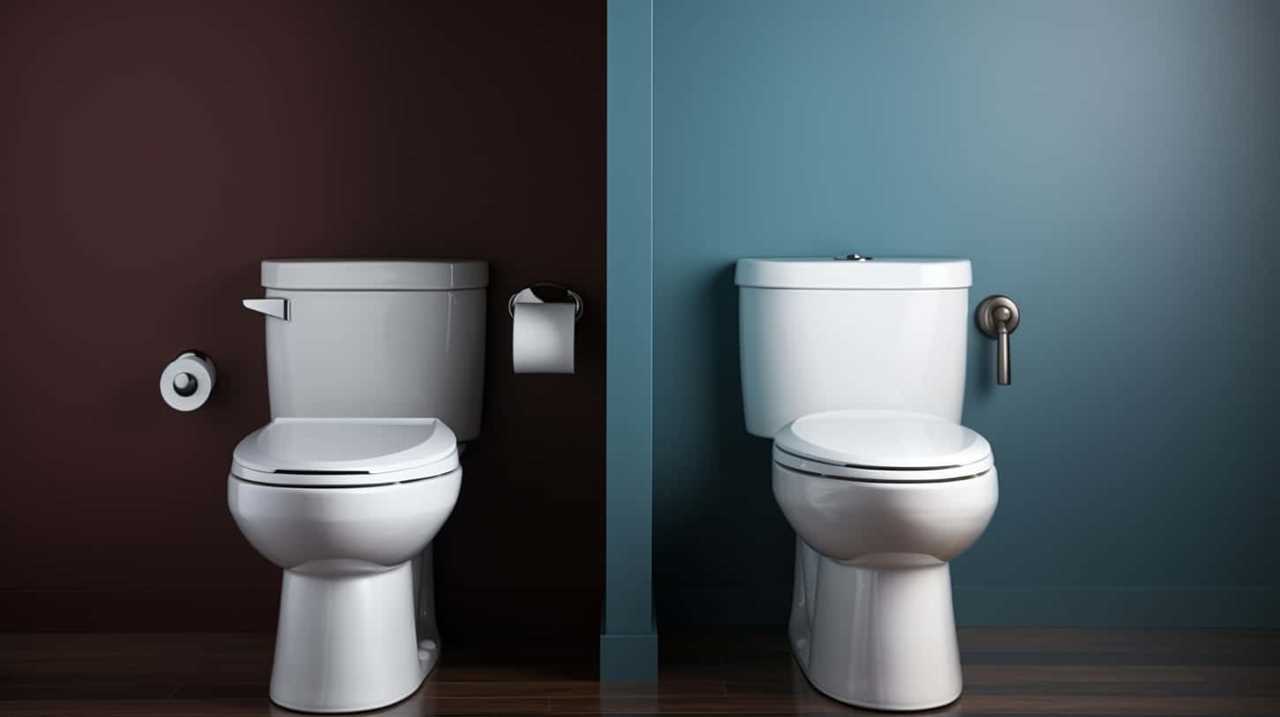
How Often Does the Waste Need to Be Emptied From the Bucket Toilet?
We usually empty the waste from the bucket toilet every 2-3 days to ensure proper waste disposal. This frequency may vary depending on usage and the number of people using it.
Are There Any Health Risks Associated With Using a Bucket Toilet?
There are potential health risks associated with using a bucket toilet, such as the spread of diseases and odors. However, if properly maintained and emptied regularly, the health benefits and environmental impact can be mitigated.
Can a Bucket Toilet Be Installed in a Recreational Vehicle (Rv)?
Yes, a bucket toilet can be installed in an RV. However, bucket toilet maintenance may be more frequent due to limited capacity. Pros include cost-effectiveness, while cons include odor management and disposal challenges.
Are There Any Regulations or Guidelines Regarding the Use of Bucket Toilets in Certain Areas?
There are regulations and guidelines regarding the use of bucket toilets in certain areas. It is important to follow these rules to ensure compliance and proper sanitation practices.
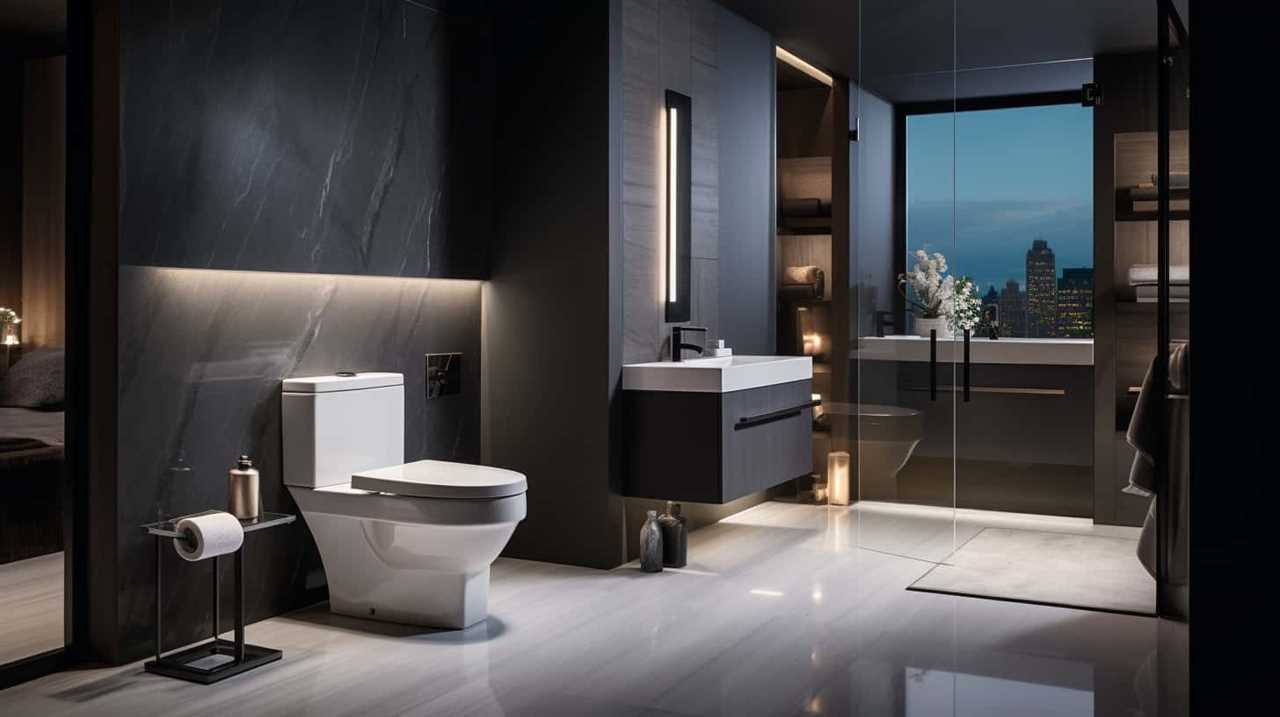
Conclusion
In conclusion, the bucket toilet is a simple yet effective solution for waste management. Its basic components, such as the collection bucket and seat, work together to ensure proper waste collection and storage.
Odor control methods, such as using sawdust or lime, help maintain a pleasant environment. Disposal and composting of waste can be done in an environmentally friendly manner.
Regular maintenance and cleaning are essential for a hygienic and functional bucket toilet. Overall, this practical system offers an efficient and sustainable solution for sanitation needs.
